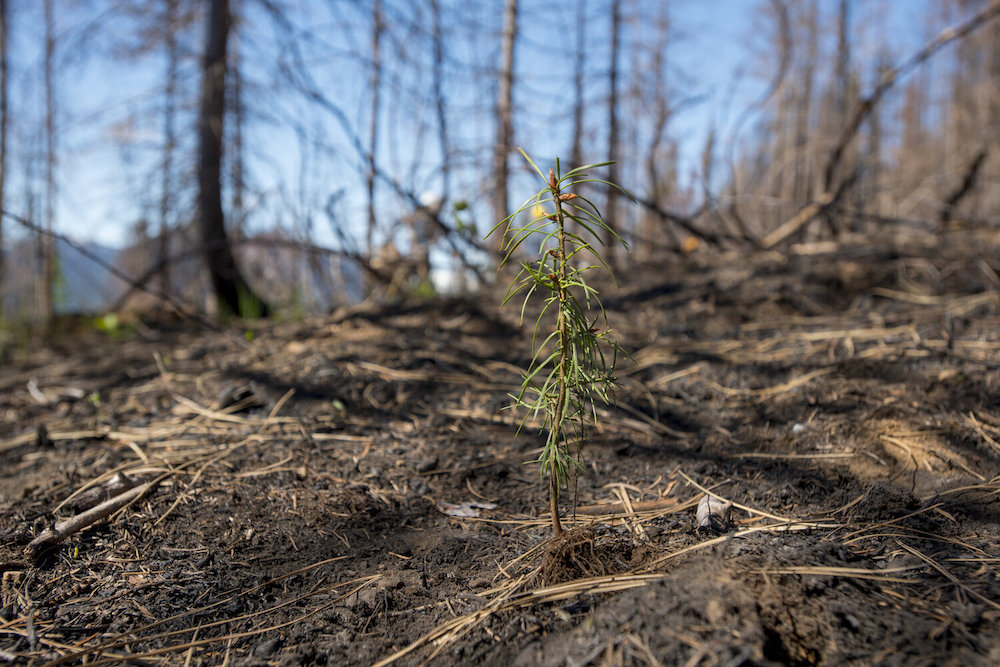
- Details
- By Chez Oxendine
- Economic Development
A new federal report aimed at boosting economic development in forest-dependent communities has drawn mixed reactions from tribal leaders, who say the recommendations don't go far enough in addressing long-standing issues in tribal forestry management and economic development.
The Sept. 27 report, Economic Development in Forest Communities, was jointly produced by the Departments of Agriculture, Interior, and Commerce. It was developed in response to climate change impacts, workforce and housing shortages, and barriers to intergovernmental coordination in rural forest-dependent communities, according to a USDA statement.
Intertribal Timber Council President Cody Desautel, who also serves as executive director of the Colville Tribe, said the report highlights particular pain points for tribal economic development in the sector, including a lack of tribal consultation on forest management and housing crises that impact tribes’ ability to hire foresters.
However, Desautel argues the report’s recommendations address the symptoms rather than the root causes. He points to inconsistent year-to-year federal funding as a core problem that continues to stifle tribes’ attempts to stand up, expand, and maintain forestry programs or participate in co-stewardship.
“If you give me $100,000 one year and a million dollars in the next year, I'll build $100,000 programs because I don’t want to have to send 90% of my staff home in any given year when we have those shortfall years,” Desautel told Tribal Business News. “Consistent funding has to be a part of this.”
The report outlines six recommendations for improving economic development in forestry, with a particular focus on co-stewardship agreements for tribal communities. These agreements, which have been a priority for the U.S. Forest Service since a 2022 executive order from President Joe Biden, allow tribes to participate in stewardship of their ancestral lands, often incorporating traditional Indigenous methods of preservation and sustainable agriculture.
The USDA, which runs the Forest Service, signed more than 120 such agreements and more than tripled its tribal co-stewardship investments to $68 million last fiscal year, since making them a priority in 2022. Even so, challenges remain.
Desautel points to the report’s recommendation around housing initiatives as especially necessary for tribal operations. A tribe can’t expand their operations or take full advantage of the forestry economy — or any economic development opportunities — if their new hires don’t have anywhere to live, he said.
“I asked my division directors what would be your highest priority, and I thought all of them would have needs in their functional area, like natural resources or health or human services,” Desautel said. “Every single one of them said housing. They said they're struggling to recruit people because those hires don't have a place to live, even if my staff can convince them this is a place they should work.”
The report highlights co-stewardship agreements as opportunities for tribes to engage more fully in recreational tourism and the forest product industry. Proposed initiatives include expanding tribal nurseries for traditionally used plants and increasing tribal consultation on land-use decisions.
However, these agreements face significant challenges. Many tribes lack the resources to fully participate in consultations, a disparity that the report acknowledges as an impediment to effective collaboration.
Capacity can also be an issue on the federal side. Staffing cuts at the Bureau of Indian Affairs (BIA) forestry office in Washington state have severely impacted timber sales for the Yakama Nation, according to Phil Rigdon, superintendent of the tribe’s Department of Natural Resources.
The office approves timber sales for the tribe’s mill, which processes wood from a 650,000-acre, tribally managed forest — one of the largest Native timber operations in the country. BIA staffing cuts have slowed some approvals to a crawl, causing a sharp decline in mill’s timber sales, Rigdon said.
“Our mill is just hanging on, economically,” Rigdon told Tribal Business News. “If you don’t have people to do work for, say, the National Environmental Protection Act, it becomes a major challenge to do timber sales, and it all stems off of the staffing levels that we’re seeing over there.”
Even if capacity issues are solved, some tribal leaders argue that co-stewardship doesn’t go far enough. Keith Karnes, forestry director for the Leech Lake Band of Ojibwe in Minnesota, said his tribe would prefer co-management for projects in the Chippewa National Forest, which would give the tribe more say in decision-making on their ancestral lands.
“Right now, we’re mostly getting along, so it’s not an issue, but there’s only one signature and that’s the Forest Service — so by definition that’s co-stewardship, not co-management,” Karnes said. “I wish it would be co-management.”
Despite these critiques, tribal leaders see the report as a step in the right direction — but only a step. More needs to be done to fully include tribes in planning from the jump and provide more consistent funding for their work, ITC’s Desautel said.
“Going back even just 15 years, you almost never saw tribes included in these decisions. I think you’re starting to see tribes as maybe not one of the primary drivers of these conversations, but definitely part of the conversations when they start,” Desautel said. “We’re on a good trajectory, but this is the next step in a road that should ultimately lead to co-management.”
